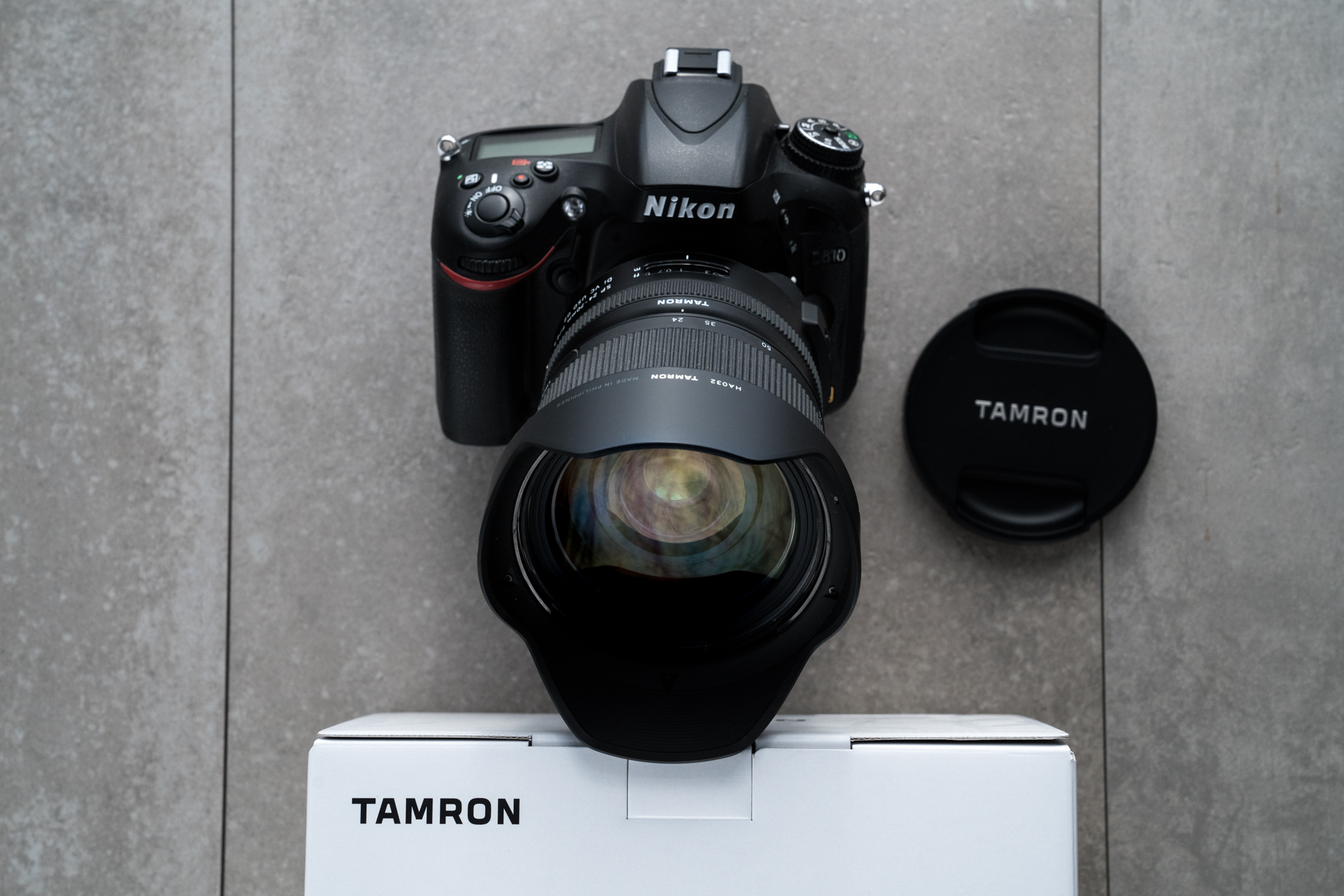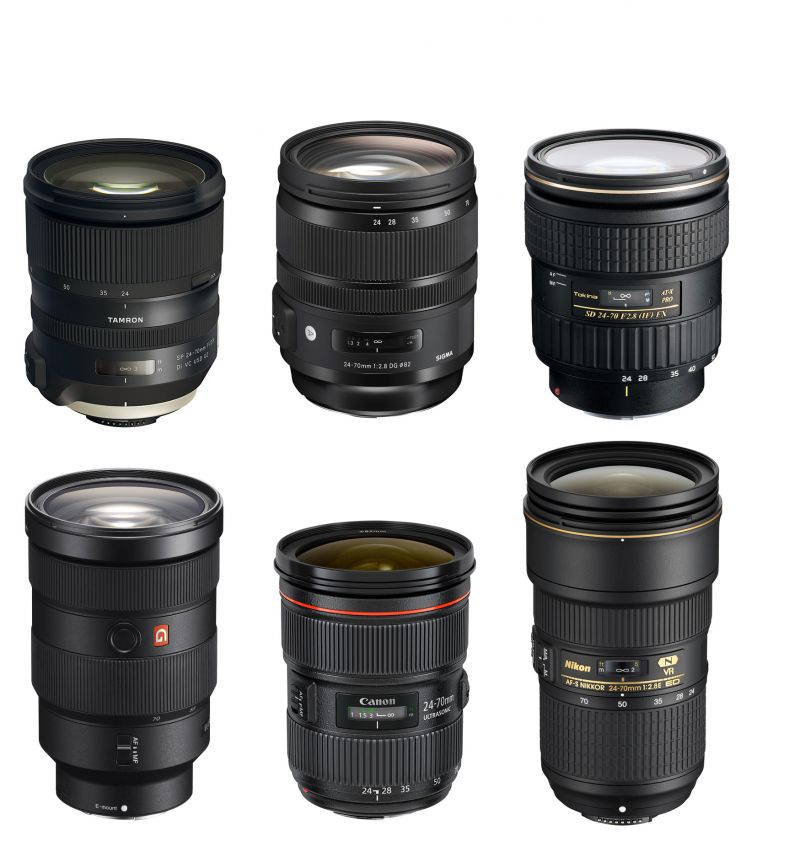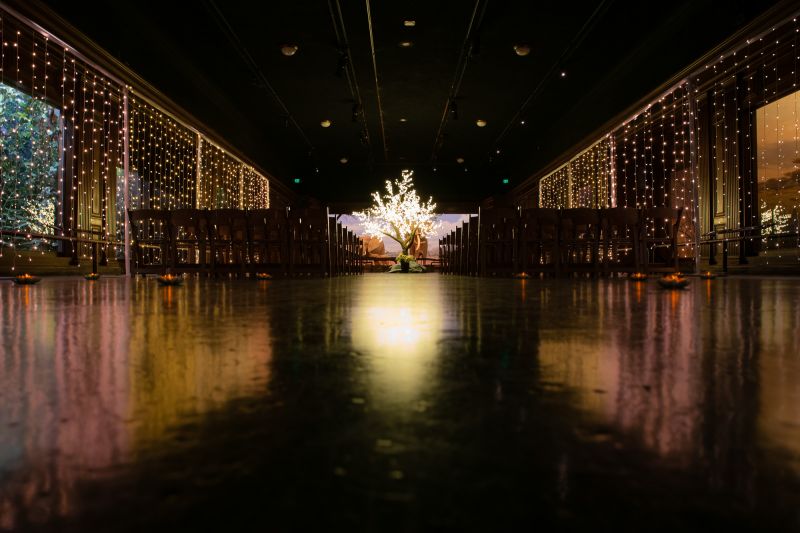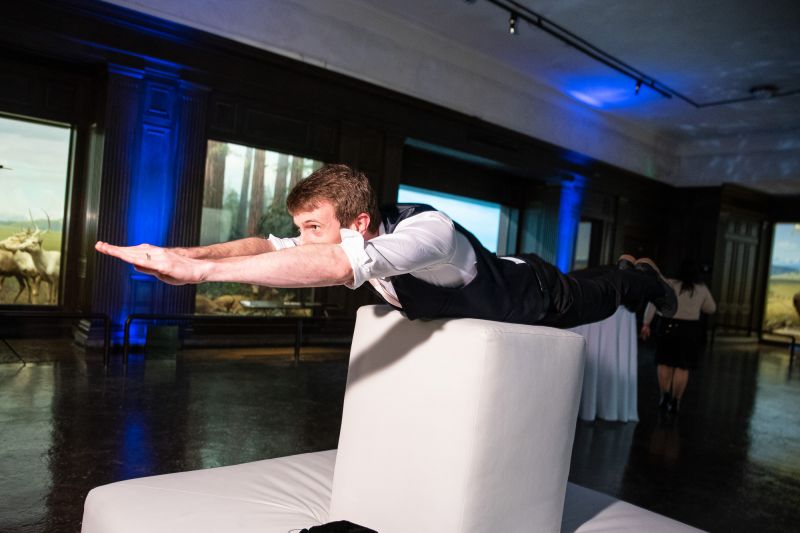
Don’t miss SLR Lounge Wedding Week! Get details here.
Third party lenses have been coming into their own quite impressively over the past few years. All of the major contenders started offering impressive sharpness (at least in the center) at least one or two lens generations ago, yet struggled to match the name-brand performance with respect to more complicated things such as autofocus reliability and overall durability. Or, as I like to call it, “abusability”.
Here we put the Tamron 24-70mm f/2.8 VC G2, a highly anticipated model, through its paces for wedding photography.
**It is available in both Nikon F and Canon EF Mounts
 Rawrrr! 55mm, 1/50 sec @ f/2.8 & ISO 400
Rawrrr! 55mm, 1/50 sec @ f/2.8 & ISO 400
 Tamron 24-70mm f/2.8 VC G2, Nikon D750, 100% crop
Tamron 24-70mm f/2.8 VC G2, Nikon D750, 100% crop
Simply put, if you wanted the highest level of reliability, and if you use your gear heavily for 12+ hour wedding days every single weekend and often finding yourself trying to focus in a pitch-dark room or church or reception hall, then your best choice was still a Canon or Nikon lens. Tamron, Sigma, and Tokina options, even though they had developed ultrasonic style focus motors, were still slightly less trustworthy.
Sure, if you’re a casual shooter who mostly shoots in daylight conditions, then you may have already bought the original Tamron 24-70mm f/2.8 VC, which was the first optically stabilized 24-70mm f/2.8 lens ever made. It’s a pretty sharp lens, and it appears that for the most part Tamron got the overall build quality right too, as I have not heard any reports of the older lens falling apart over time, like third-party lenses used to do 10-15 years ago.
However, as a full-time wedding photographer, I myself –plus a handful of both Nikon and Canon shooting co-workers– have found that in the worst types of light, even impressive lenses like the original 24-70 VC would “choke”.

Enter the Tamron 24-70 f/2.8 VC G2. Along with the Tamron 70-200mm f/2.8 VC G2, this lens marks Tamron’s second generation foray into flagship quality lenses, with focal ranges that many wedding and portrait photographers consider to be their workhorse, bread-and-butter lenses. In short, many full-time pros depend on a 24-70mm f/2.8 lens to pay their bills. They need the lens to never let them down in terms of image quality, autofocus reliability and overall durability.
So the odds were against this lens. Despite all the third-party partying that has been going on lately, 24-70mm was still the hallowed ground of the name brands for many discerning pros. You just couldn’t trust a third party lens for that specific task. An ultra-wide zoom, sure, or an incredibly sharp prime, maybe. But 24-70mm? I was almost certain that I’d be let down, frustrated by the lens being soft at one end of the zoom range, or by just not focusing consistently in any light, let alone terrible light.
 Great bokeh, for 26mm on an f/2.8 zoom lens!
Great bokeh, for 26mm on an f/2.8 zoom lens!
1/15 sec @ f/2.8 & ISO 1600
Performance
The G2 lens has indeed finally done it. Not only is it impeccably sharp, and built to last, most importantly: I cannot notice a difference in my keeper rate compared to any of the name-brand flagship 24-70’s, even when focusing in the absolute worst kind of light imaginable.
What about quantitative results, you say? Well, I used to be addicted to precise analyses of any and every measurable aspect of performance, and while image quality is easy enough to measure, autofocus is not.
For transparencym I did not perform a “lab” test to determine the exact autofocus performance of the Tamron 24-70mm f/2.8 VC G2. Why not? Because I’m up to about 300 weddings in my career, and maybe 3 million photos clicked. At this point, I can usually assess the performance of a lens’ autofocus abilities just by using it in real-world conditions for a full day of actual work.
However, I will attempt to quantify my assessment of the Tamron’s autofocus performance with the following:
For static subject, if you use proper technique and give the lens anything with texture to “grab”, this lens will never miss. I did have to dial in a bit of focus micro-adjustment first, but that is honestly something I’m totally used to at this point, even with Canon and Nikon lenses; it’s just something that optical phase detect autofocus needs.
For action subjects, again, if you use proper technique, this lens will nail 75-100% of the shots in terrible light, and should nail 100% of shots in great light.
Of course if the subject is moving very fast the AF capability of the body itself comes into play, but I’m rather confident that again, with the right AF technique, (dynamic point, group point, 3-D tracking, etc. etc.) the Tamron 24-70mm f/2.8 VC G2 will perform exactly on par with a name-brand option.
 Distortion & Vignetting Test, 24mm @ f/2.8: about normal; pleasant looking if you want it, easy to correct with a profile if you don’t want it.
Distortion & Vignetting Test, 24mm @ f/2.8: about normal; pleasant looking if you want it, easy to correct with a profile if you don’t want it.


Overall, there isn’t an aspect of performance that I can complain about. It’s ultra-sharp; it clearly out-resolves my 24 megapixel sensor, and I would suspect it is ready for 50+ megapixels. Vignetting and distortion are low, coma, astigmatism and aberrations / fringing are almost non-existent.
Design & Quality
I’m not a fan of heavy lenses, and the Tamron 24-70mm f/2.8 G2 is a heavy lens. However, one thing I’ve always liked about Tamron is that they at least try to make things lightweight; it has been one of their brand’s selling points for as long as I can remember – and I can remember all the way back to the days of the late Don Gale!
So it is no surprise that, despite being built like a tank, this lens actually weighs in at just under 2 lbs, (899g) while the Nikon and Sigma 24-70’s which include stabilization weigh in at well over 2lbs or 1kg. (2.36 lbs 1070g and 2.25 lbs / 1020g, respectively.)
 The 24-70mm f/2.8’s:
The 24-70mm f/2.8’s:
Tamron, Sigma, Tokina,
Canon, Nikon, and Sony
(All roughly 2 lbs, all 82mm filters, all very sharp and solid built.)
Prices: $1,199,$1299, $699,
$2198, $1899, $2396
The only lighter “mk2” 24-70mm f/2.8 lens of this second generation is the Canon 24-70mm f/2.8 L mk2, which comes in at 1.77 lbs. (805g), but critically, it lacks stabilization.
I will though, ding Tamron for one thing, and that is the reversed position of the zoom and focus ring. As a camera reviewer, I’m totally used to zoom rings and focus rings that rotate in what feels like the “wrong” direction at first. I can get used to that in five minutes! Canon, Nikon, Sigma, Tamron… Nobody ever agreed on a standard for “zoom in”, or “focus closer”, so I just learned to adapt. However, completely changing the location of the zoom ring and focus ring, in my opinion, is an actual issue of practical use.

With my old Nikon 24-70mm f/2.8, I could zoom in and out literally by just barely flicking my finger at the zoom ring, while still supporting most of the camera body with my hand. On this Tamron, as with its predecessor, you really do have to change your entire grip on the lens, and as someone who prides themselves in being able to get accustomed to things working differently, I honestly believe it is a matter of actual inferiority, not just personal preference or familiarity.
If this ring reversal is the price we must pay to get stabilization and incredible sharpness in a package that doesn’t break the bank or the shoulders, then so be it.
 24mm,0.4 sec @ f/8 & ISO 800 – Yes, the VC works amazingly well!
24mm,0.4 sec @ f/8 & ISO 800 – Yes, the VC works amazingly well!
 24mm, 1/200 sec @ f/2.8 & ISO 1600
24mm, 1/200 sec @ f/2.8 & ISO 1600
Value & alternatives
So, who should buy this new “king of the hill” of 24-70mm lenses? Considering its heft and not-a-kit-lens price tag, casual shooters may wish to pass. Honestly, the original Tamron 24-70mm f/2.8 VC is likely more than good enough for many folks
What about the current dark horse, the Tokina 24-70mm f/2.8? I have yet to give it a full review, however, I do know two things about it: Firstly, it’s incredibly sharp and incredibly well-built. So if for example you were a landscape or nightscape shooter who didn’t care about autofocus as much, at $699 you couldn’t go wrong with the Tokina.
Secondly, however, it does still use an older style autofocus motor unfortunately, so it is not likely to be in the same league as this Tamron G2 lens when it comes to focusing in pitch-dark conditions, or fast action.
 24mm, 1/200 @ f/4 & ISO 100
24mm, 1/200 @ f/4 & ISO 100
 24mm, 1/100 sec @ f/2.8 & ISO 3200
24mm, 1/100 sec @ f/2.8 & ISO 3200
Overall Review Verdict
I was skeptical at first. Could a third-party lens actually match the name brands, at THE focal length for which the name brands are best known for making reliable, snappy-to-focus, nearly-indestructible, lens?
While I believe the competition is indeed respectable, from both the name brands as well as other third parties, in my opinion, this Tamron takes the cake. It matches essentially everything you could want from a name-brand, and it does it for a fraction of the price.
While the Canon and Nikon 2nd-generation 24-70’s are getting old enough to be found for under $2,000 now, they started off at around $2K or more, and this Tamron is starting at $1,200, which means I suspect it will eventually be attainable for $1K or less. By comparison, the new Sony G-master 24-70mm f/2.8 is starting off at $2,200, a cool grand more than this Tamron, with not much in the way of added performance, at least not that you will notice in most real-world conditions. It’s hard to conceive situations in which some may still prefer a different option.

Name-brand service and support is always one thing that people bring up, and a valid point. Third-party service and support are not as extensive as it is with a Canon CPS account. On the other hand, I’m a fan of gear that just works, period, and also having a backup just in case you experience any issues.
All in all, I think Tamron has done the impossible. They’ve matched the best of the best, and at one of the toughest flagship lens ranges to match, in my opinion. My hat is off to Tamron for this milestone.
Available for purchase here.
This post was originally published in April 2018
Matthew Saville
Follow his wilderness nightscape adventures on Instagram: instagram.com/astrolandscapes




Get Connected!